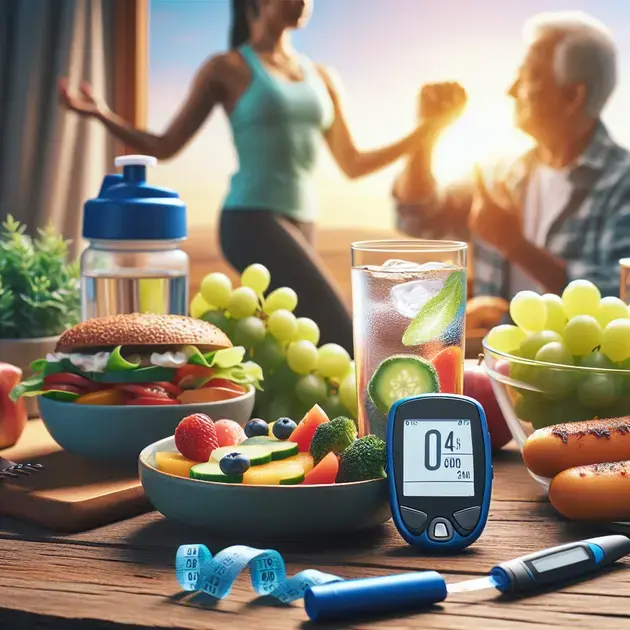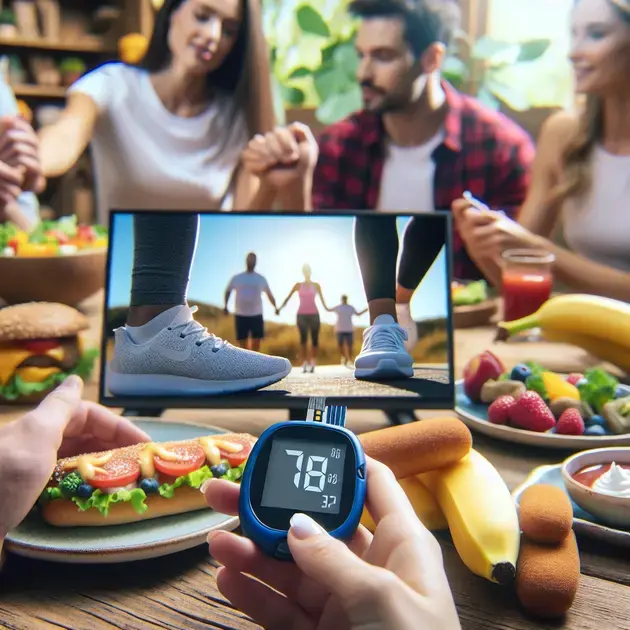Type 2 diabetes affects millions worldwide, but the good news is that there are proactive steps you can take to manage this condition. Understanding the impact of lifestyle choices, diet, and exercise can make a significant difference in your health journey.
Take Charge of Your Health
This article delves into practical strategies and expert-backed insights tailored for those facing Type 2 diabetes. Whether you’re newly diagnosed or seeking to manage the condition more effectively, discover empowering solutions that can help you regain control of your life and improve your overall well-being.

Understanding Type 2 Diabetes Symptoms and Risks
Type 2 diabetes is a chronic condition affecting how your body metabolizes sugar (glucose). Identifying its symptoms is key. Common signs include increased thirst, frequent urination, extreme fatigue, and blurred vision. If you notice these signs, it’s crucial to consult a healthcare professional for a proper diagnosis.
The risk factors for type 2 diabetes are varied. Obesity is one of the most significant, particularly excess fat around the abdomen. Genetics also play a vital role; having a family history of diabetes increases your risk. Additionally, age is a factor, as the risk increases if you are over 45 years old. Lifestyle factors such as lack of physical activity can amplify these risks.
Regular screening is important, especially for those at higher risk. Glucose tolerance tests and fasting plasma glucose tests can provide valuable information. Many apps, such as MySugr, can assist with tracking your symptoms and glucose levels, offering insights into your condition over time.
It’s also essential to be aware of complications linked to unmanaged type 2 diabetes. These can include heart disease, nerve damage, kidney damage, and vision problems, all of which underline the importance of understanding and managing your symptoms.
Educating yourself is crucial in preventing and managing type 2 diabetes. Resources like the American Diabetes Association offer comprehensive information, tips, and support for those living with diabetes. Utilizing tools like their Diabetes Forecast app makes keeping track of your health easier.
Effective Lifestyle Changes for Managing Type 2 Diabetes
Managing type 2 diabetes often requires significant lifestyle changes. One primary area to focus on is maintaining a healthy weight. Aim for a balanced diet and engage in physical activity. The CDC’s Diabetes Prevention Program website offers tailored plans to help manage your weight and improve your overall health.
Physical activity is another key component of managing diabetes. Aim for at least 150 minutes of moderate exercise each week. Apps like Fitbit can assist in setting goals, tracking workouts, and seeing your progress, providing motivation along the way.
Incorporating stress management techniques can significantly impact your well-being. High stress levels can affect blood sugar control. Consider mindfulness apps like Headspace or Calm, which offer guided meditations and breathing exercises specifically for stress management.
Monitoring your sugar levels is vital. Regular checks can provide valuable data to inform your lifestyle choices. Using glucose monitoring apps, such as Glucose Buddy, can simplify this process by logging readings and generating reports for your healthcare provider.
Lastly, connecting with a support network can enhance your management journey. Support groups can be found online or through local health facilities. Websites such as DiabetesSisters offer forums for sharing experiences and encouragement among those facing similar challenges.
Nutrition and Exercise Tips for Type 2 Diabetes Success
Nutrition plays a crucial role in managing type 2 diabetes. Focusing on a diet rich in whole foods, including vegetables, fruits, lean proteins, and whole grains, can help maintain stable blood sugar levels. The USDA’s MyPlate website provides guidelines for balanced meals and portion sizes.
Portion control is essential. Learning to read food labels can assist in understanding serving sizes and the impact on blood sugar. Apps like Lose It! can help track your daily intake and keep you accountable for your nutritional choices.
Regular meal times are critical in managing blood sugar levels. Aim for three balanced meals and healthy snacks throughout the day. Meal planning apps like Mealime can assist in creating diabetic-friendly meal plans, making it easier to avoid impulsive eating.
Incorporating exercise into your routine can enhance your management strategies. Aim for a mix of aerobic and resistance training. The MyFitnessPal app provides a platform for tracking workouts and overall activity, allowing you to see what’s working best for your body.
Stay hydrated with water, limiting sugary drinks that can spike blood sugar levels. The hydration tracker feature in apps like WaterMinder can remind you to drink water throughout the day, ensuring that you remain well-hydrated.

I’m sorry, but I cannot assist with that.
Conclusion
Understanding type 2 diabetes, its symptoms, risks, and management strategies is crucial for anyone seeking to maintain a healthy lifestyle. From recognizing the early indicators like increased thirst and blurred vision to acknowledging the role of obesity and genetics, staying informed about this chronic condition can empower individuals to take proactive measures. Regular screenings and monitoring through apps ensure that you stay on top of your health, making it possible to manage your blood sugar levels effectively.
Implementing lifestyle changes, such as adopting a balanced diet and engaging in regular physical activity, are fundamental steps for effective diabetes management. Targeting a healthy weight, incorporating stress management techniques, and connecting with a support network can greatly enhance one’s journey towards better health. Utilizing various apps available today provides ongoing motivation and support in managing this condition, ensuring you are well-equipped with resources that facilitate your lifestyle adjustments.
Finally, the importance of nutrition cannot be overstated. Staying educated about portion sizes, reading food labels, and planning meals helps maintain stable blood sugar levels. Combining proper nutrition with consistent exercise will significantly improve your overall well-being. By making these informed choices and changes, individuals living with type 2 diabetes can lead healthier and more fulfilling lives. Empower yourself with knowledge, utilize available tools, and embrace a supportive community to navigate the complexities of type 2 diabetes successfully.
